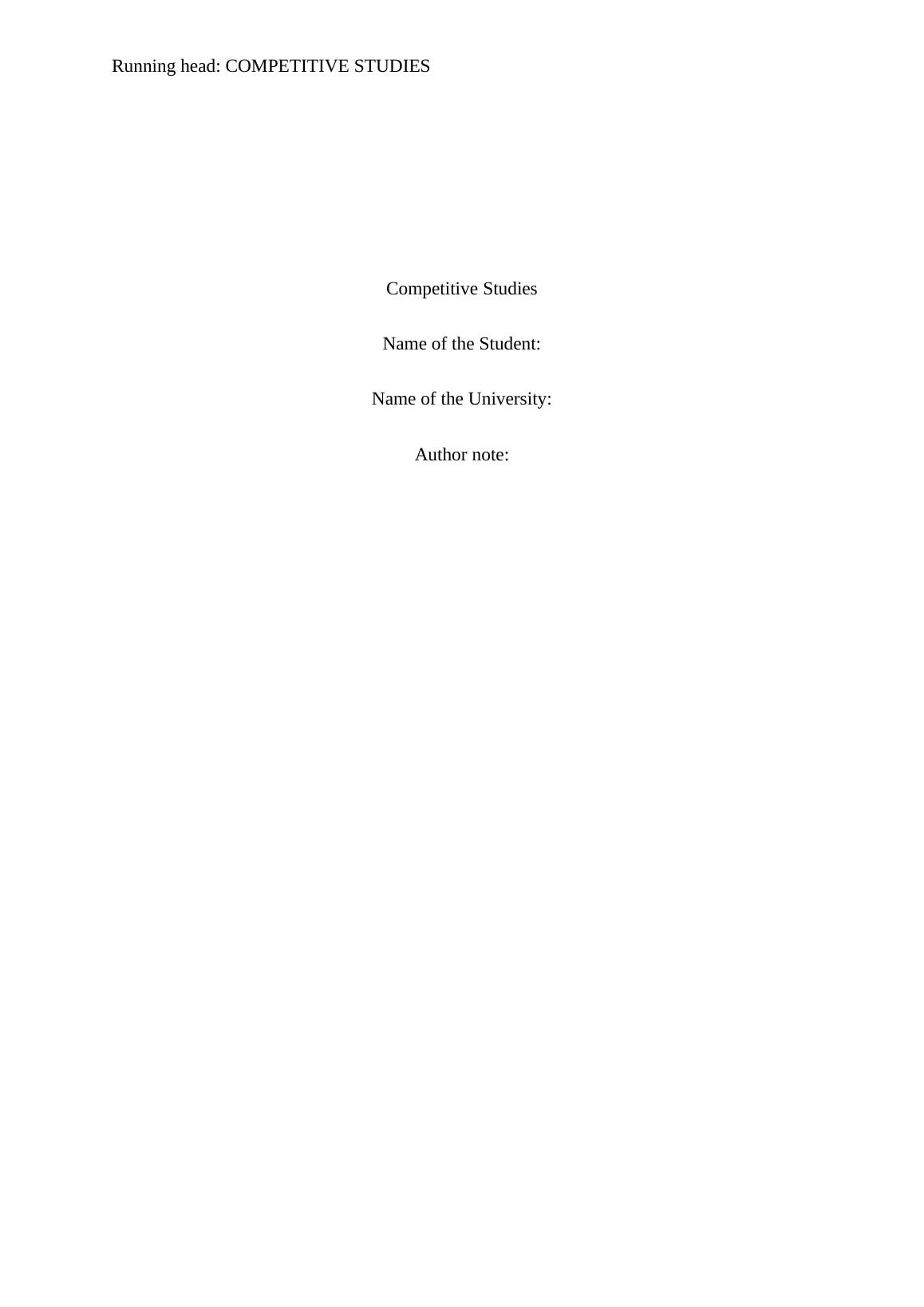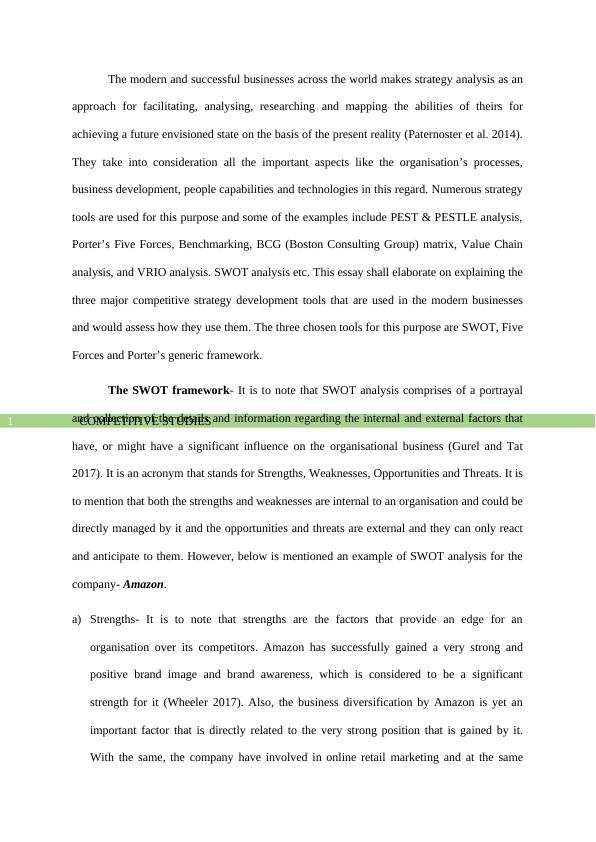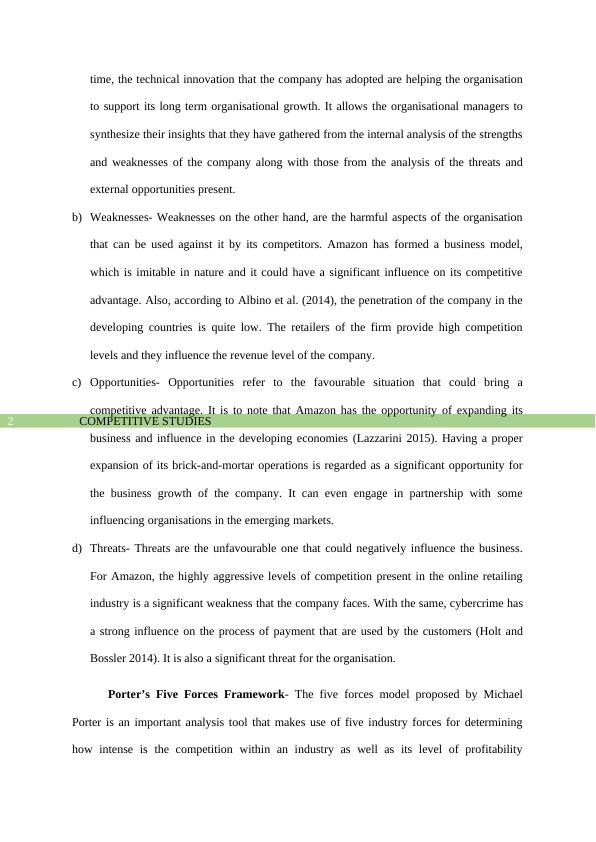Competitive Studies: SWOT, Five Forces and Porter’s Generic Framework
Write a comprehensive discussion of three strategy models with practical application to current business examples.
8 Pages2171 Words482 Views
Added on 2022-10-01
About This Document
This essay elaborates on explaining the three major competitive strategy development tools that are used in the modern businesses and would assess how they use them. The three chosen tools for this purpose are SWOT, Five Forces and Porter’s generic framework.
Competitive Studies: SWOT, Five Forces and Porter’s Generic Framework
Write a comprehensive discussion of three strategy models with practical application to current business examples.
Added on 2022-10-01
ShareRelated Documents
End of preview
Want to access all the pages? Upload your documents or become a member.
Enterprise stratergy
|12
|3720
|20
Implementation of SWOT Analysis
|11
|1401
|19
Positive and Negative Impacts of the Macro Environment on Business Operations
|14
|606
|79
Qatar Executive: Overview, SWOT Analysis, Porter's Five Forces, Recommendations
|17
|646
|306
Analysis of Strategic Tools in Management
|10
|1678
|29
Leadership Style and CSR of Amazon
|12
|3952
|51



